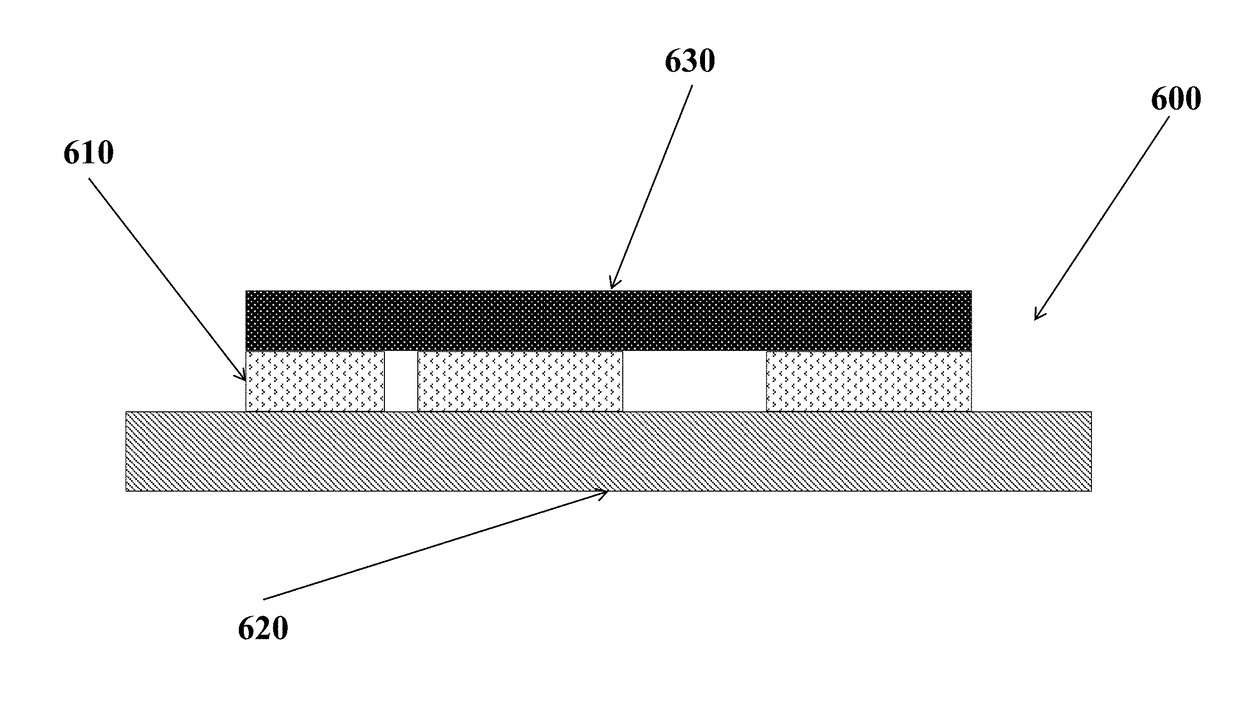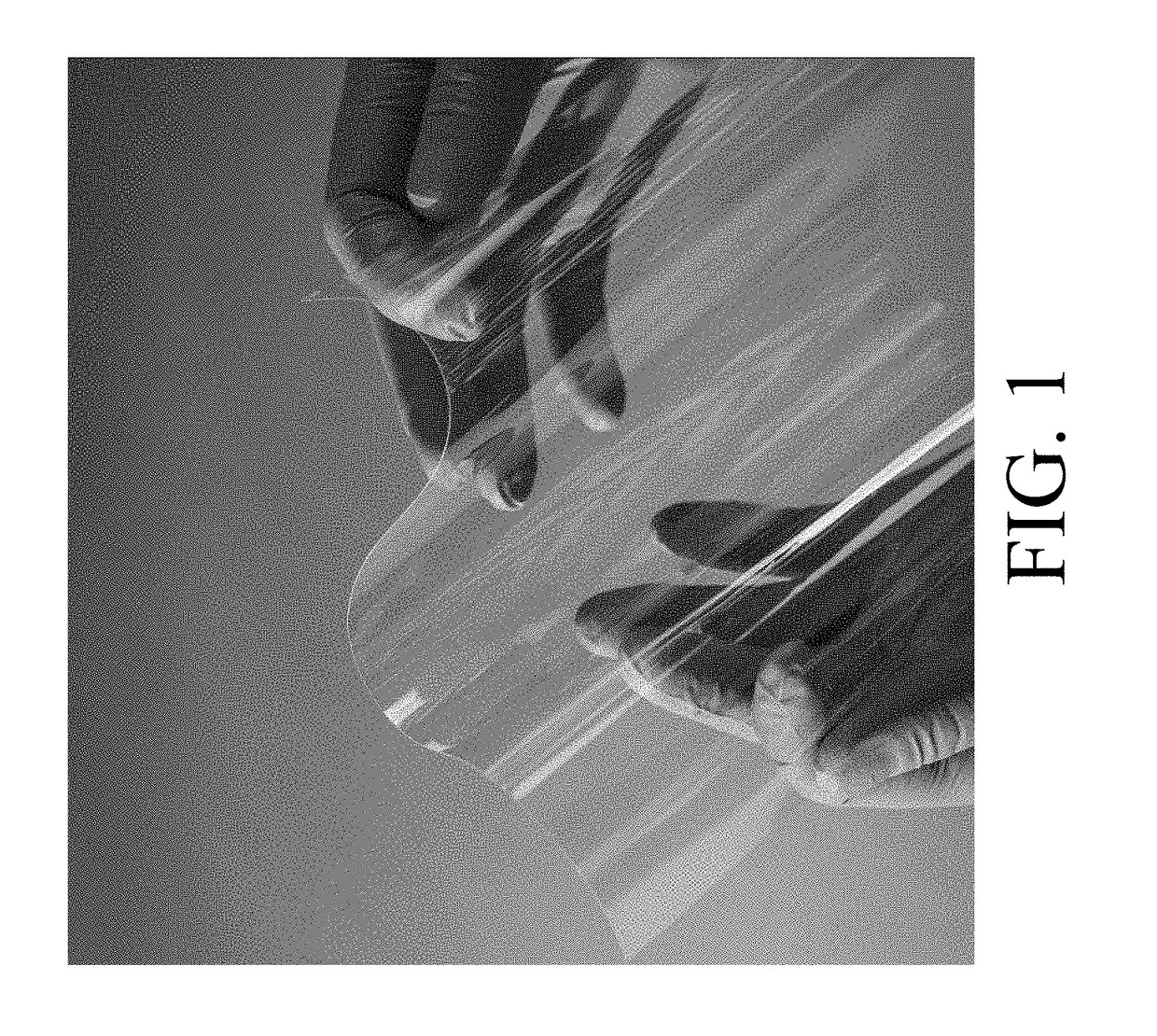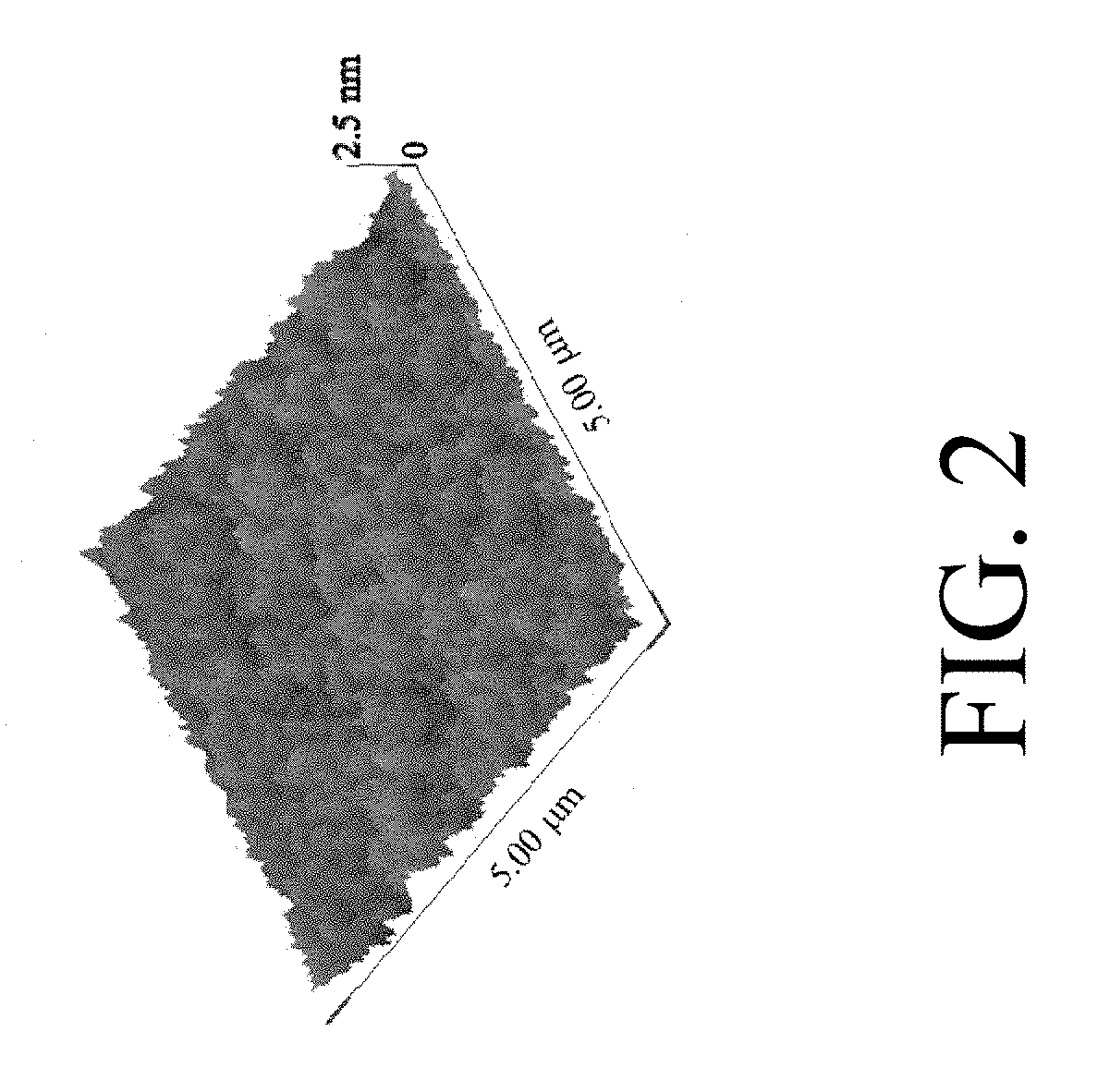Polymer substrate for flexible electronics microfabrication and methods of use
a flexible electronics and microfabrication technology, applied in the direction of dielectric characteristics, organic semiconductor devices, dielectric components, etc., can solve the problems of inability to reliably and reproducibly align existing backplane substrates, the limit of flexible substrate materials seen today in the microfabrication of low-cost and high-yield flexible backplane tft stacks, and the inability to meet the requirements of microfabrication requirements. , to achieve the effect of improving performance,
- Summary
- Abstract
- Description
- Claims
- Application Information
AI Technical Summary
Benefits of technology
Problems solved by technology
Method used
Image
Examples
example 1
[0056]The following table illustrates some of the properties of an example flexible polymeric substrate film:
PropertyMeasurement RangeValueUnitsMethodPhysicalUltimate Tensile Strength25°C.55MPaASTM D170860°C.10100°C.3Ultimate Elongation25°C.5%ASTM D170860°C.135100°C.50Young's Modulus25°C.2GPaASTM D170860°C.0.1100°C.0.03ThermalCoefficient of Thermal Expansion0-50°C.35ppm / ° C.TMA(in-plane; linear)50-250°C.150Surface Roughness100μm2nmAFMGlass Transition (Tg)−40-200°C.53° C.DSCMelting Point (Tm)——° C.—Thermal Degradation - 1% (T1%)25-700°C.275° C.TGAThermal Degradation - 5% (T5%)25-700°C.360° C.TGAThermal Degradation - Onset (Td)25-700°C.370° C.TGAOpticalOptical Transmission230-375nm0-80 (linear)%UV-Vis365-450nm>80450-800nm>90Refractive Index—1.555—ASTM D542Retardation2000mm20.21nmASTM D4093Birefringence2000mm242nm / cmASTM D4093Haze2000mm20.46%ASTM D1003Chemical CompatibilityaPolar Protic Solvent (e.g. water)23°C.GOOD—Exp.Polar Aprotic Solvent (e.g. acetone)23°C.GOODb—Exp.Nonpolar Solven...
example 2
[0057]To a fluid reservoir was added the multifunctional thiol monomer trimethylolpropane tris(3-mercaptopropionate) (1 mol eq.) and the multifunctional co-monomer 1,3,5-Triallyl-1,3,5-triazine-2,4,6(1H,3H,5H)-trione (1 mol eq.), and the container was sealed. The sealed container was placed into a rotary mixer and mixed at 2350 rotations per minute (rpm) for 5 minutes. The container was removed from the mixer, opened, and 1.5 wt % of the free-radical initiator 2,2-dimethoxy-2-phenylacetophenone was added into the mixed monomer solution at room temperature (about 25° C.). The container was again sealed, placed into the rotary mixer and mixed at 2350 rpm for an additional 5 minutes. No organic solvent was added to the solution, resulting in the fluid reservoir containing a 100% (w / w) solid-fraction monomer solution. The monomer solution mixture was mounted to a slot-die coating tool and processed into a thin-film atop a carrier substrate via the slot-die coating technique. The cast mo...
example 3
[0059]A flexible polymeric substrate film was fabricated using a monomer solution of multifunctional thiol monomer Tri s[2-(3-mercaptopropionyloxy)ethyl] isocyanurate (1 mol eq.) and the multifunctional co-monomer Tris(4-hydroxyphenyl)methane triglycidyl ether (1 mol eq.). The monomer solution was placed in a sealed container. The sealed container was placed into a rotary mixer and mixed at 2350 rotations per minute (rpm) for 5 minutes. The container was removed from the mixer, opened, and 1.5 wt % of the catalyst tripropylamine was pipetted dropwise into the mixed monomer solution at room temperature (about 25° C.). The container was again sealed, placed into the rotary mixer and mixed at 2350 rpm for an additional 5 minutes. Finally, the container was again removed from the mixer, opened, and the organic solvent tetrahydrofuran was added until the final solution was a 92.5% (w / w) solute-fraction monomer solution. The monomer solution mixture was mounted to a slot-die coating tool ...
PUM
 Login to View More
Login to View More Abstract
Description
Claims
Application Information
 Login to View More
Login to View More - R&D Engineer
- R&D Manager
- IP Professional
- Industry Leading Data Capabilities
- Powerful AI technology
- Patent DNA Extraction
Browse by: Latest US Patents, China's latest patents, Technical Efficacy Thesaurus, Application Domain, Technology Topic, Popular Technical Reports.
© 2024 PatSnap. All rights reserved.Legal|Privacy policy|Modern Slavery Act Transparency Statement|Sitemap|About US| Contact US: help@patsnap.com










